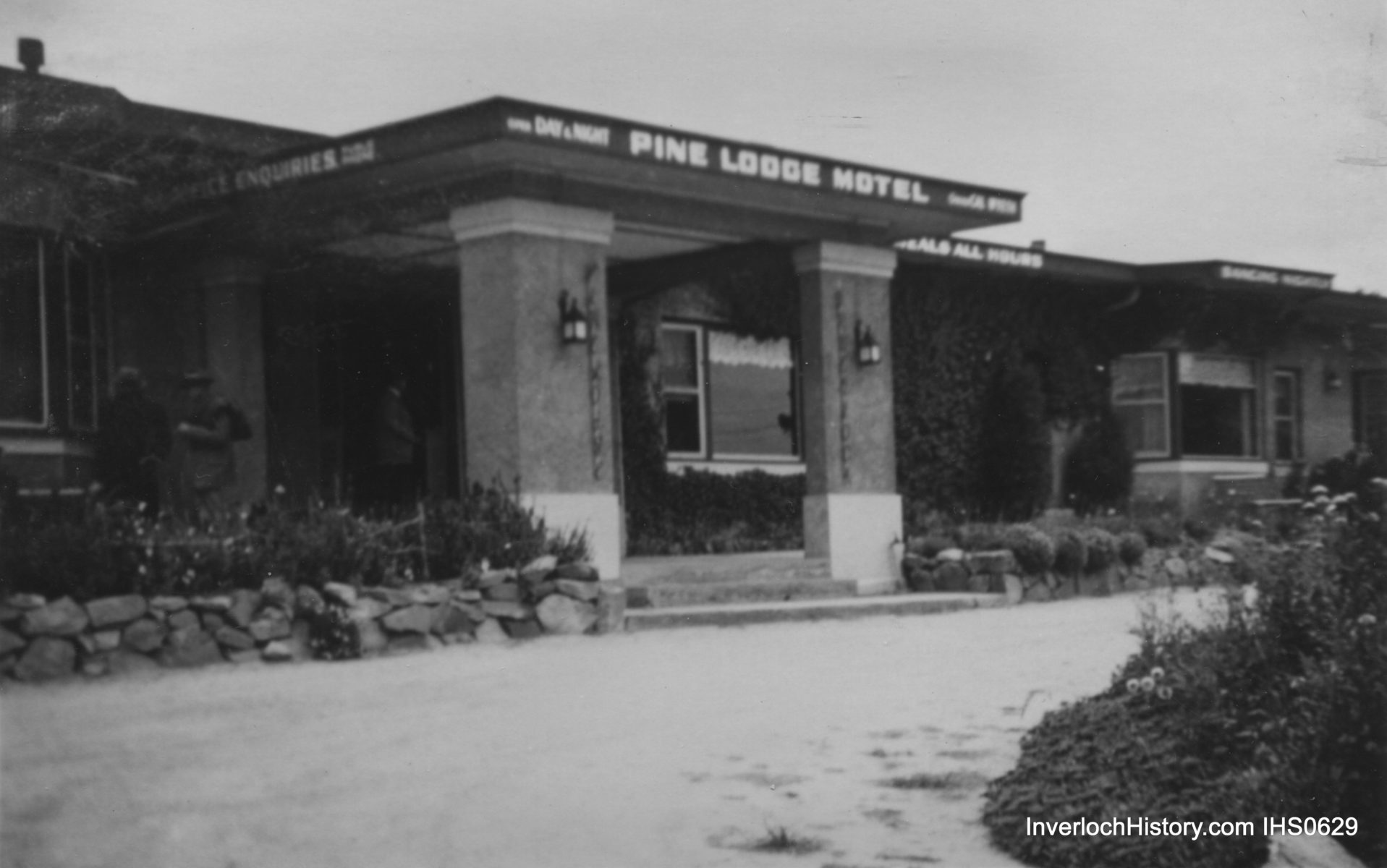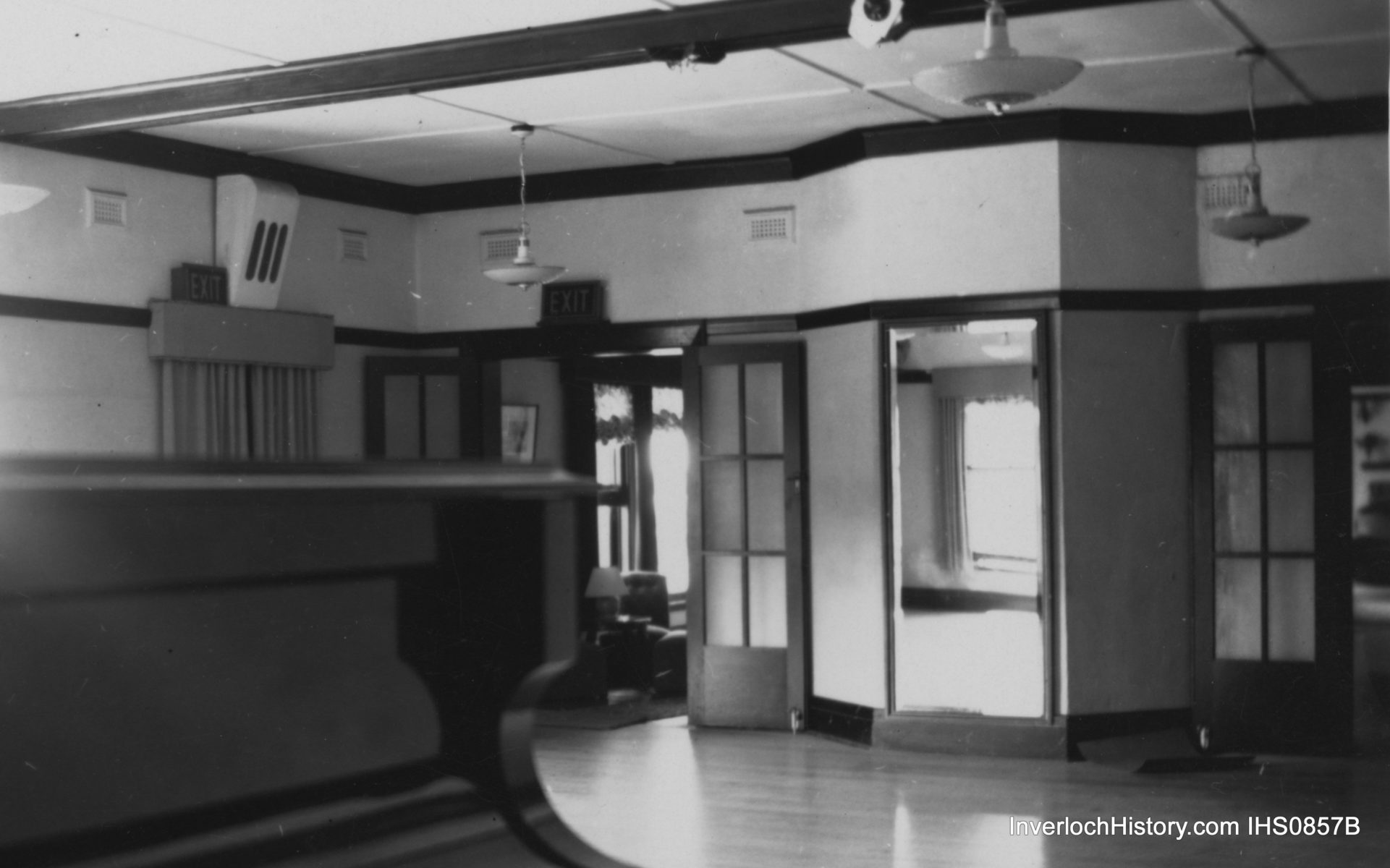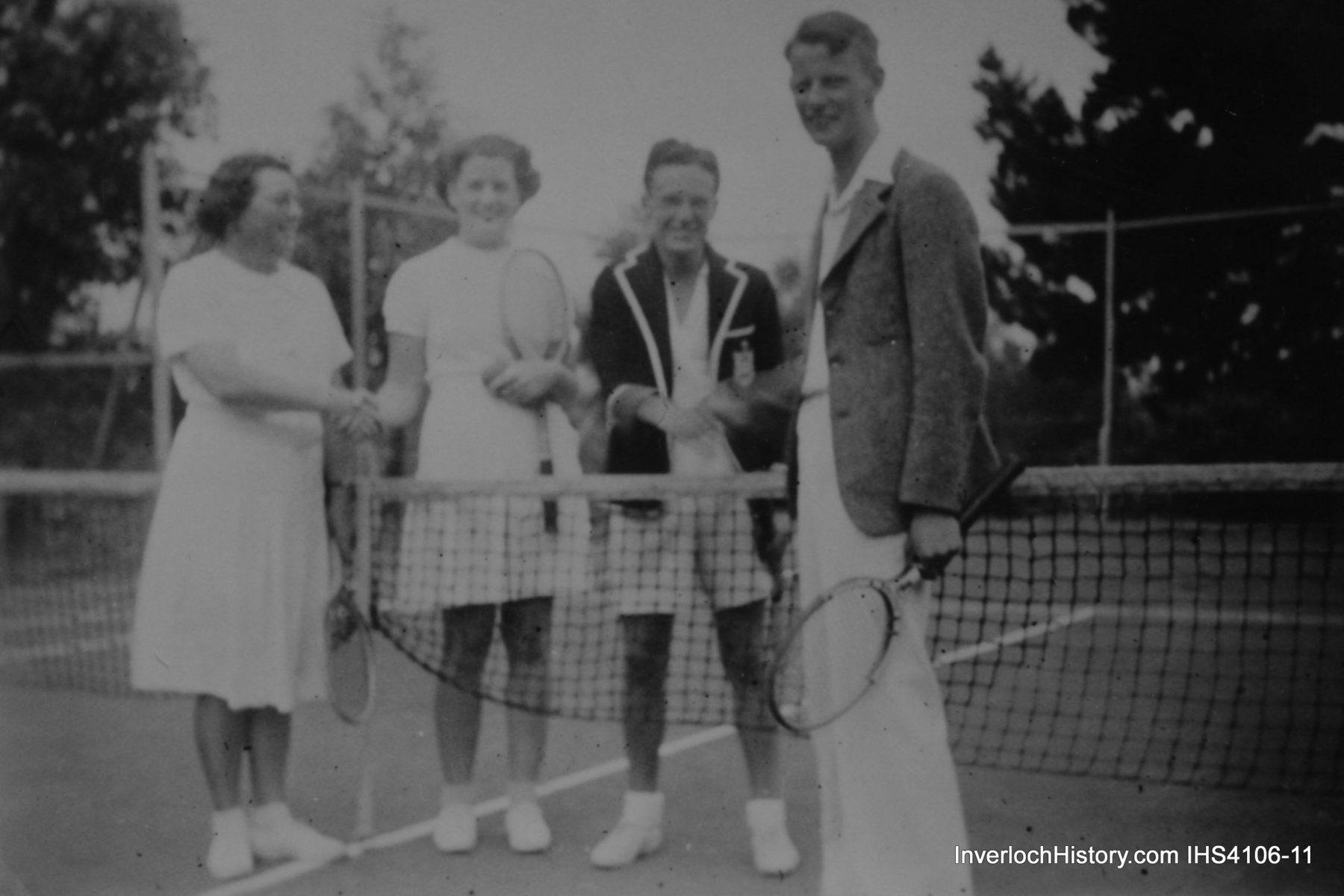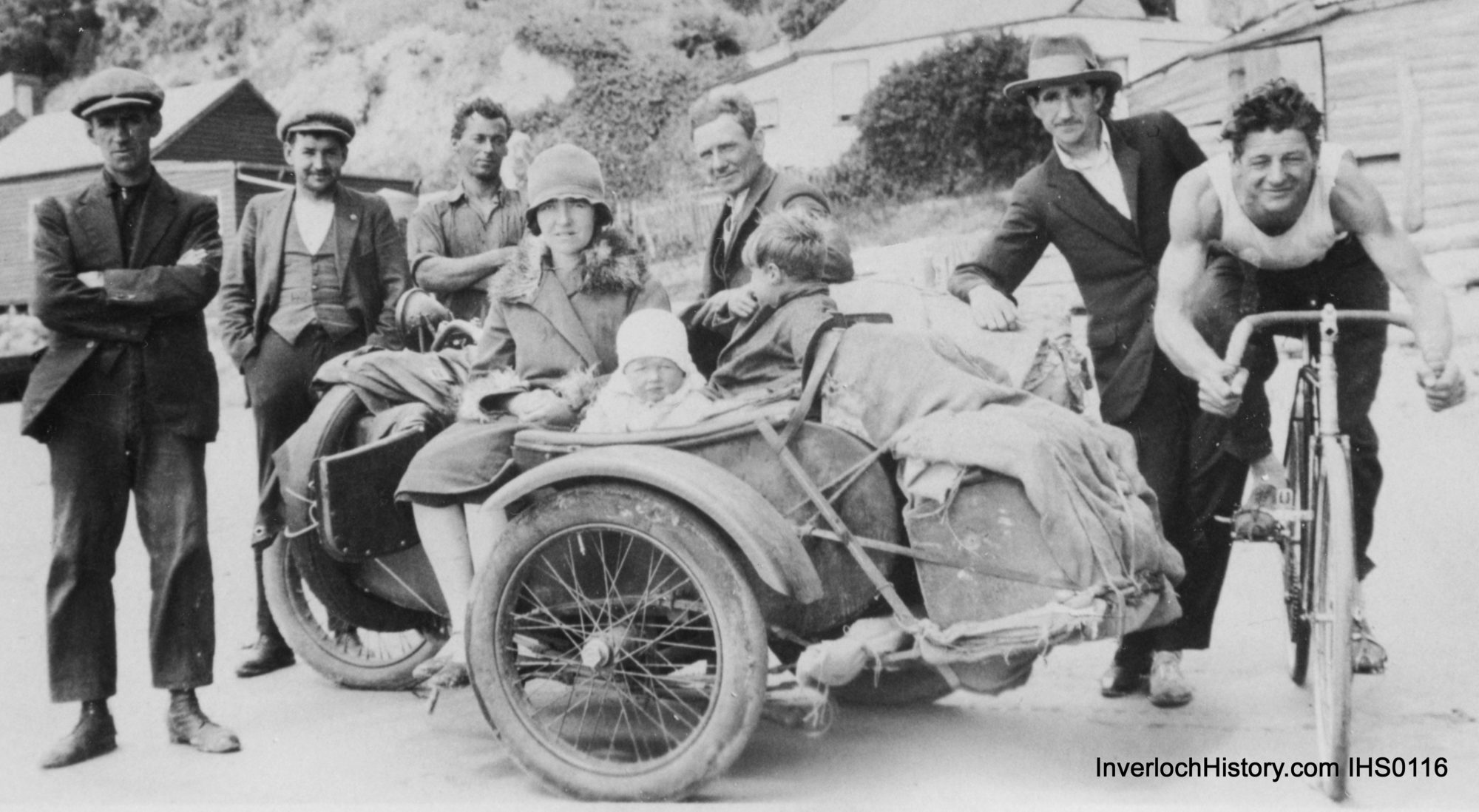There’s something very special about the tragically now vanished Pine Lodge at Inverloch.
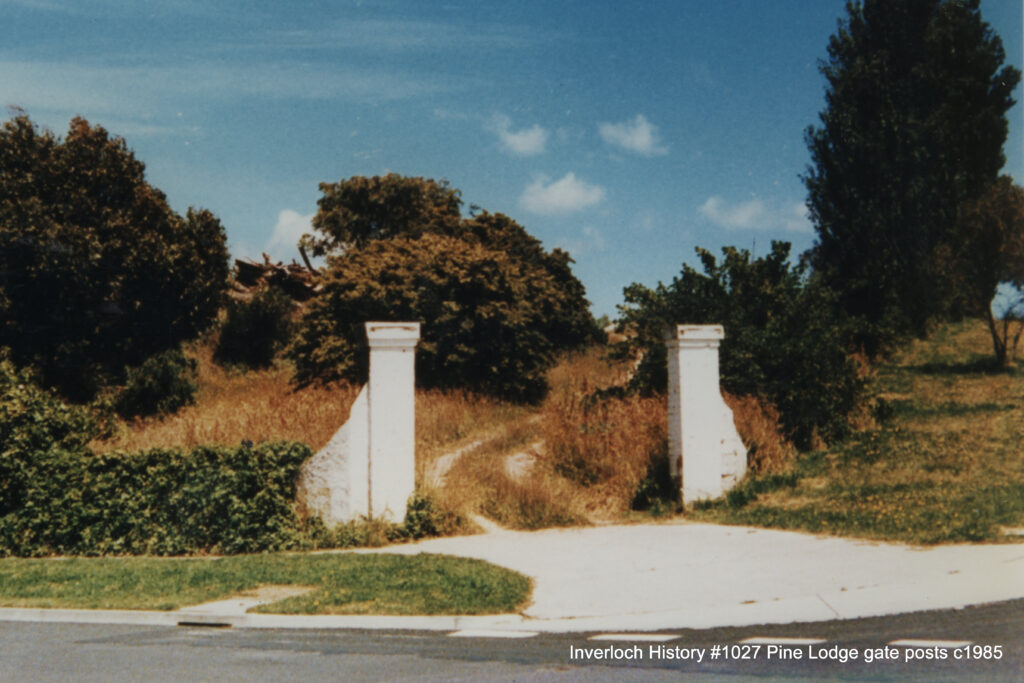
Sitting on seven acres at the comer of Ramsey Parade and Scarborough Street, it was built in 1930, and sadly demolished in 1985. Almost everything about Pine Lodge was notable, and should be remembered. If it still existed, it would be the prime historic building in Inverloch, yet its fame would and should go beyond the Bass Coast area and Gippsland, for the story of its origin, its structure, its architecture, the people who stayed there and the man who ran it, built it and during the Great Depression saw a vision for it, is the story of legendary quality, worthy of any notable Victorian inclusion.
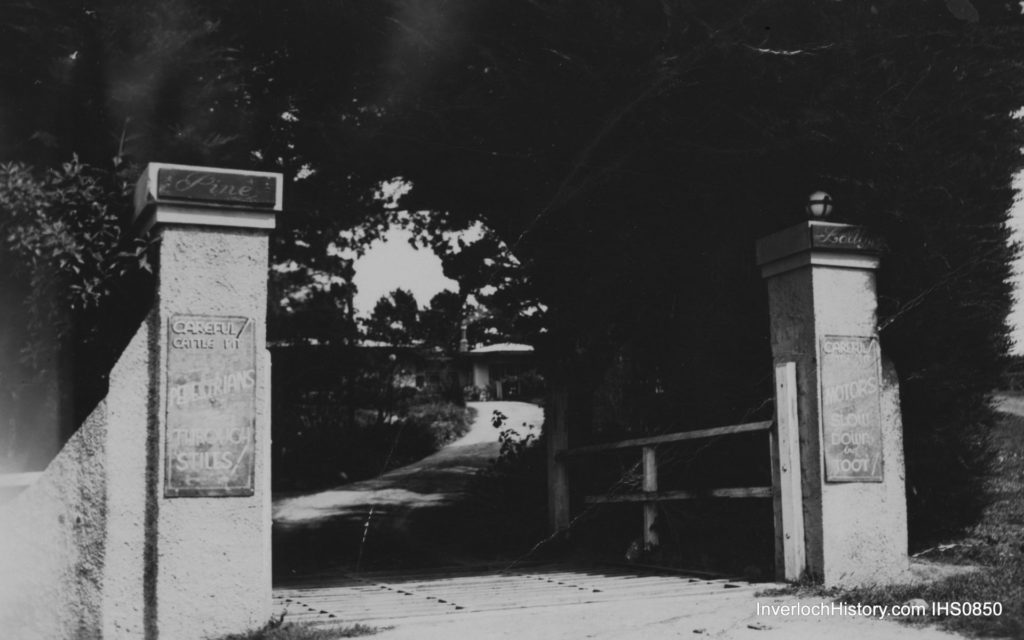
Costing a reputed $40,000, it was built on land on what was known as Graham’s Pine Paddock by Calvert Wyeth – but better known as Cal Wyeth, he trained as a pilot in World War One. The Great War finished before Cal could challenge the enemy with his new skill of flying. By intelligent business acumen he built up a solid financial backing, and during a stay in the United States, he was influenced by a friend to sell all his stocks and shares, and so when the financial market collapsed in 1929-30 Cal Wyeth had money, not worthless stocks and shares.

Returning to his beloved Inverloch, he boldly decided to commence on a project which was visionary, bold, unselfish and profoundly important to the future of Inverloch and its people. The vision went like this ……it was designed by him in the American Club or Lodge architectural style, following his visit to the USA, where clearly he had been highly influenced in what he saw and how some Americans spent their holidays. It was said and claimed by many that it was Pine Lodge that put Inverloch ‘on the map”.
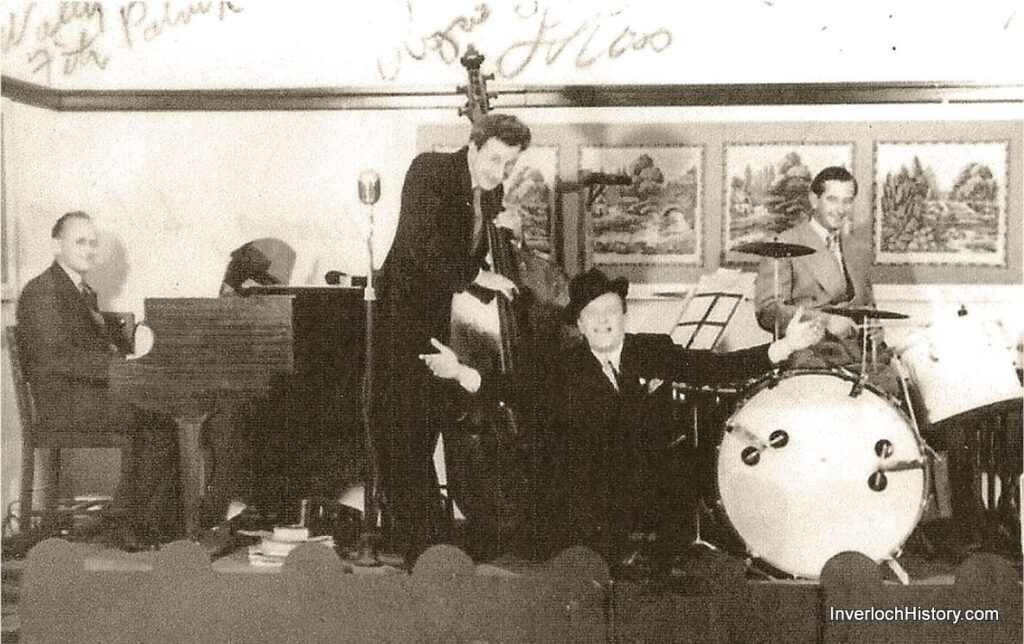
His market was aimed at the wealthy in the Australian, but particularly the Victorian society. It was built by local people, so employment was offered to local people in very harsh financial times. Further, Pine Lodge would be operated by local people, offering steady employment. He set high standards in the operation, treating his customers to the highest possible luxury standards of the 1930’s. Every car had a garage, every room had hot water, there was regular dancing with a ballroom and entertainment, holiday activities abounded which included swimming in the Olympic size salt water pool, tennis, billiards, shooting, and horse riding.

He hired a Hungarian cook and his wife from a top Melbourne restaurant, with luncheon and dinner written in French on the menu. He maintained a vegetable ‘patch’ and garden to help Pine Lodge to become self sufficient. Electric power was available – he had a ships engine in a building he called the Power House, which supplied full power for the place as well as hot water, whilst the remainder of Inverloch was on a 32 volt system. He had tanks and dams, and he collected water from all his roofs. His water tower was connected to a pump which serviced the place. He brought clean water from the Ruttle farm three kilometers away, and used bath water to flush out the septic system. All of this was an organized system and well planned services of the highest quality, using systems which were not experienced for the average citizen locally for over twenty to thirty years.
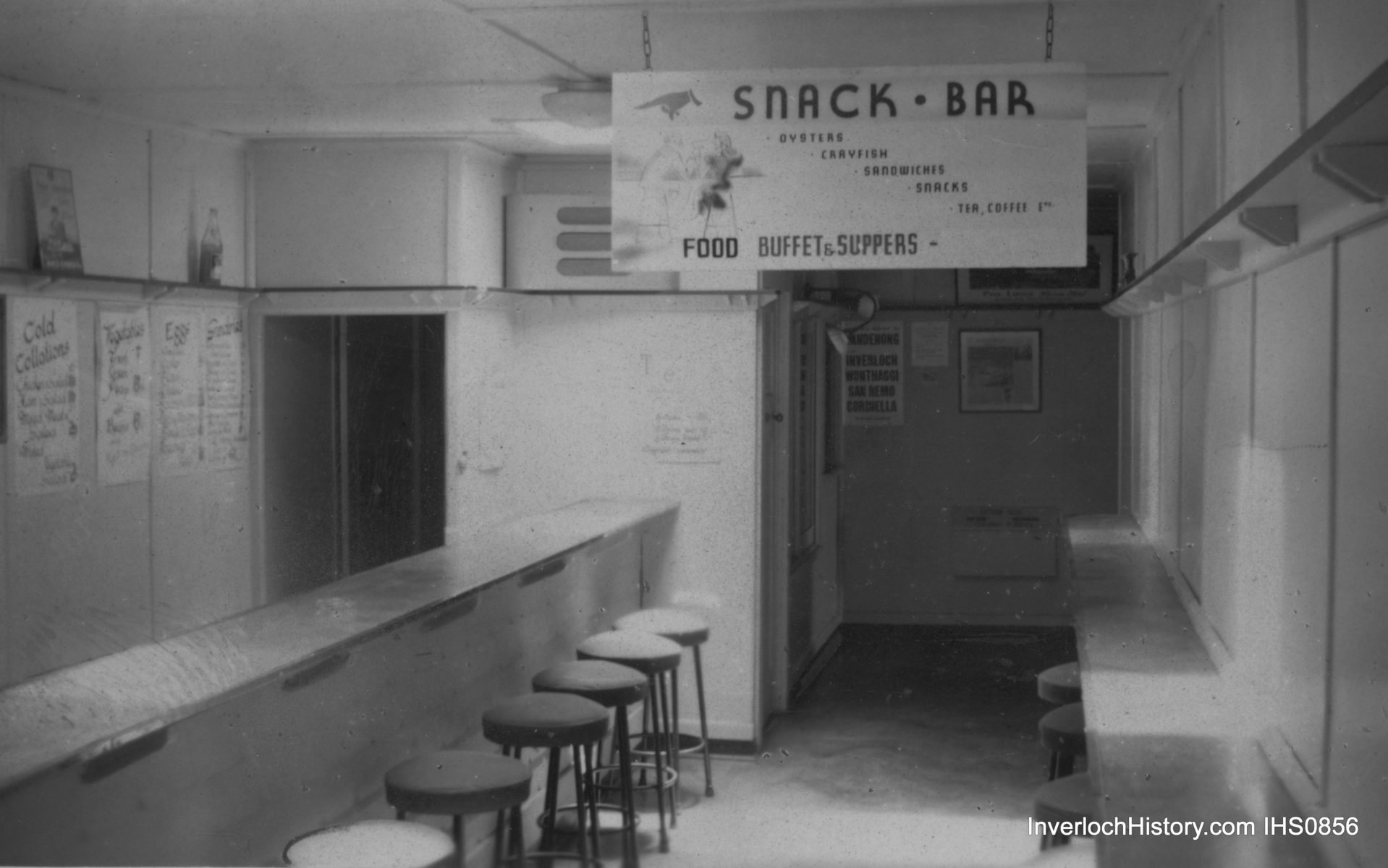
All of this happened during the period 1930 to 1941. Upon Japan entering World War 2, tourism dropped dramatically, and at this point Cal Wyeth, who was in the Army Reserve, offered the resort as a facility for the military. An officer at Crib Point – Navy Surgeon Captain Scott-Mackenzie snapped up the offer and Pine Lodge became a Military Hospital, with the promise that at the end of the war, the place would be restored to its original condition.
Incoming patients came from various theatres of war, namely Crete, Greece, Dakar and the Coral Sea battle. Staff included two surgeon lieutenants, a sick bay petty officer, seven berth attendants, an officers steward and a supply assistant. Red Cross branches in Korumburra, Wonthaggi and Leongatha supplied, where practicable sixteen nursing aides. There were usually 25 to 30 patients, the usual stay being two to three weeks. Some wives of the patients came to Inverloch but stayed at the Esplanade Hotel and in Wonthaggi. Patients were allowed a deal of freedom in daylight hours, but strict bans applied to the Esplanade Hotel and the whole of Wonthaggi. A small van ran between the Flinders Naval depot and Inverloch. Supplies for the hospital were sourced locally where possible. Daily bread and milk were supplied to Pine Lodge from the local shops. One enterprising Sick Berth Petty Officer called “Shorty” Stimson established a large vegetable patch, as well as having a pigsty with three pigs, who happily disposed of all kitchen waste!
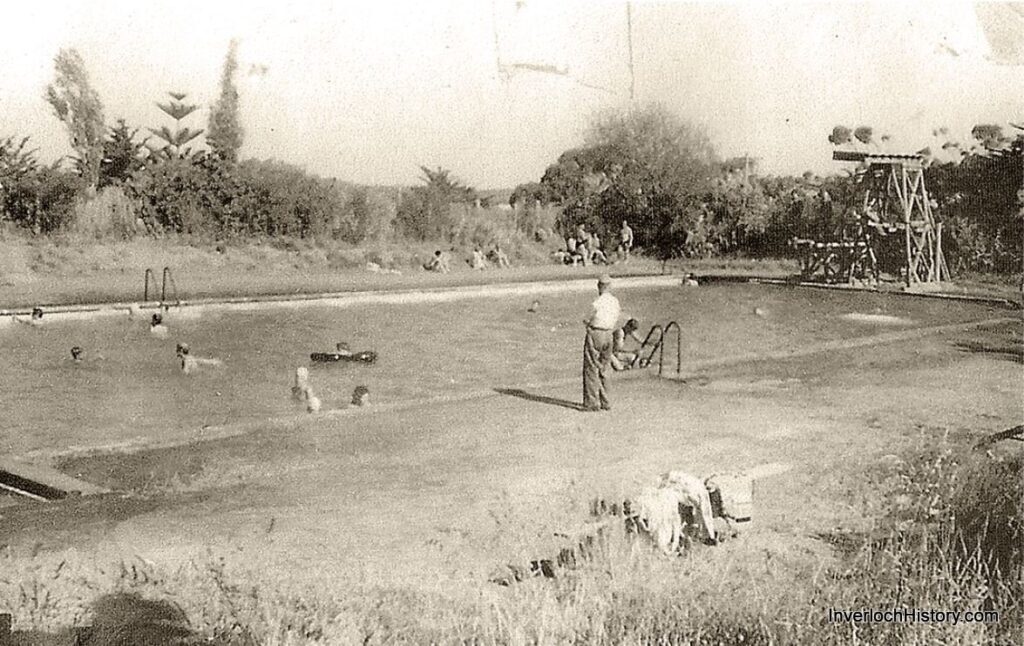
Clearly, the patients at Pine Lodge were treated very well – some hired rowing boats, whilst a wife of the Wonthaggi baker organized a group of girls to visit the hospital on Sunday for afternoon tea, and what was described as ‘entertainment’. Fit patients could attend local dances at the Mechanics Institute as well as playing euchre. Mrs. Donohue’s shop and Mrs. Nelson’s Tarax Bar also proved good meeting places.
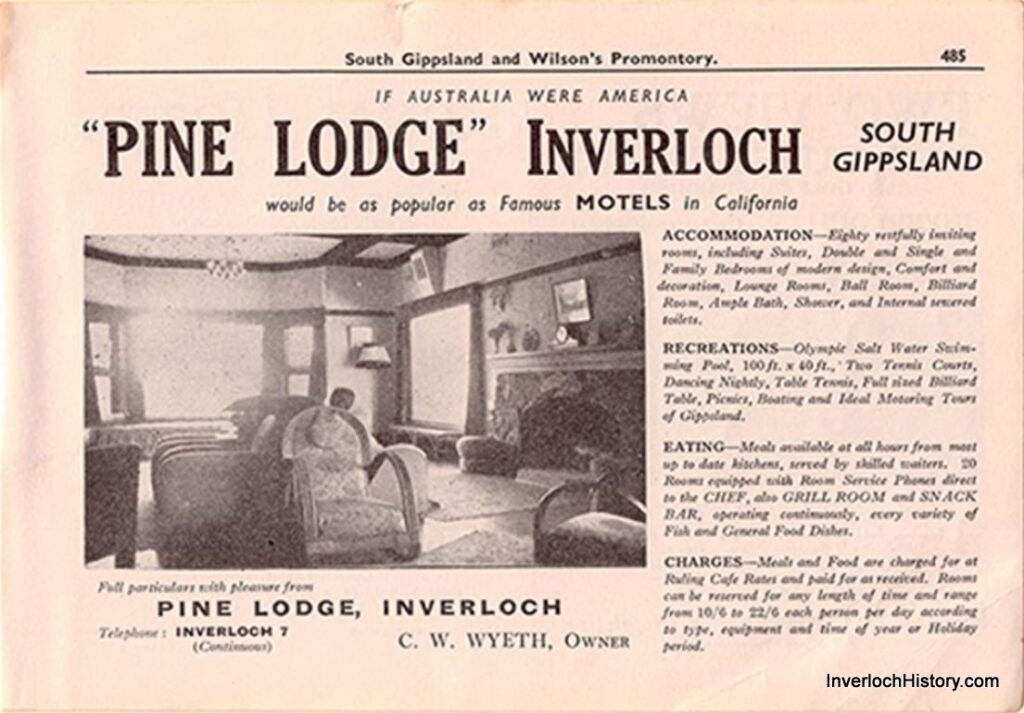
Pine Lodge was retumed to Cal Wyeth in early 1947. It was not in good order, and because of many building material shortages until about 1953, repair was slow. Cal Wyeth decided to no longer run the place as a Private Hotel, and more as a Motel. But
Victoria was changing, the types of holidays were changing, people built many of their own ‘holiday shacks’ around Port Phillip and Western Port Bays. More people owned motor cars and petrol was cheap. Many saw Pine Lodge as old fashioned, but it still had some faithful followers who wanted old fashioned comforts and values.
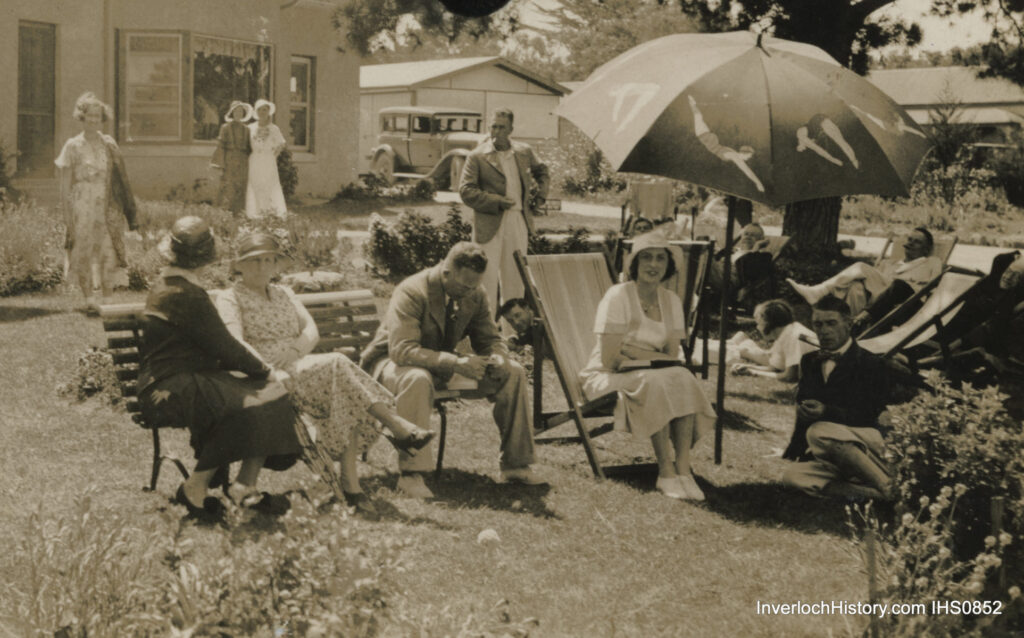
By the 1970’s, Pine Lodge found business in having group bookings – children, university students, motor car enthusiasts and the like. It was popular again, but by 1980 a critical point had been reached for the 1930’s Pine Lodge did not meet the standards of 1980, required by local councils.
The cost of upgrading was prohibitive, which included street schemes, connection to town water, fire security measures and connection to a sewerage scheme. All these legal requirements proved the end for Pine Lodge. In 1981 it was sold, and in 1983 Cal Wyeth died at the age of 86. The land he owned in the Esplanade is now the Wyeth-McNamara Park, where children play.
Attempts were made to save the formerly prestigious ‘Country Club’ with its American Country or Lodge architecture.
But it was not to be, and despite Council and private citizen efforts, the building was demolished one Sunday morning starting at 5.30am !
Inverloch & Victoria are much poorer for its destruction.
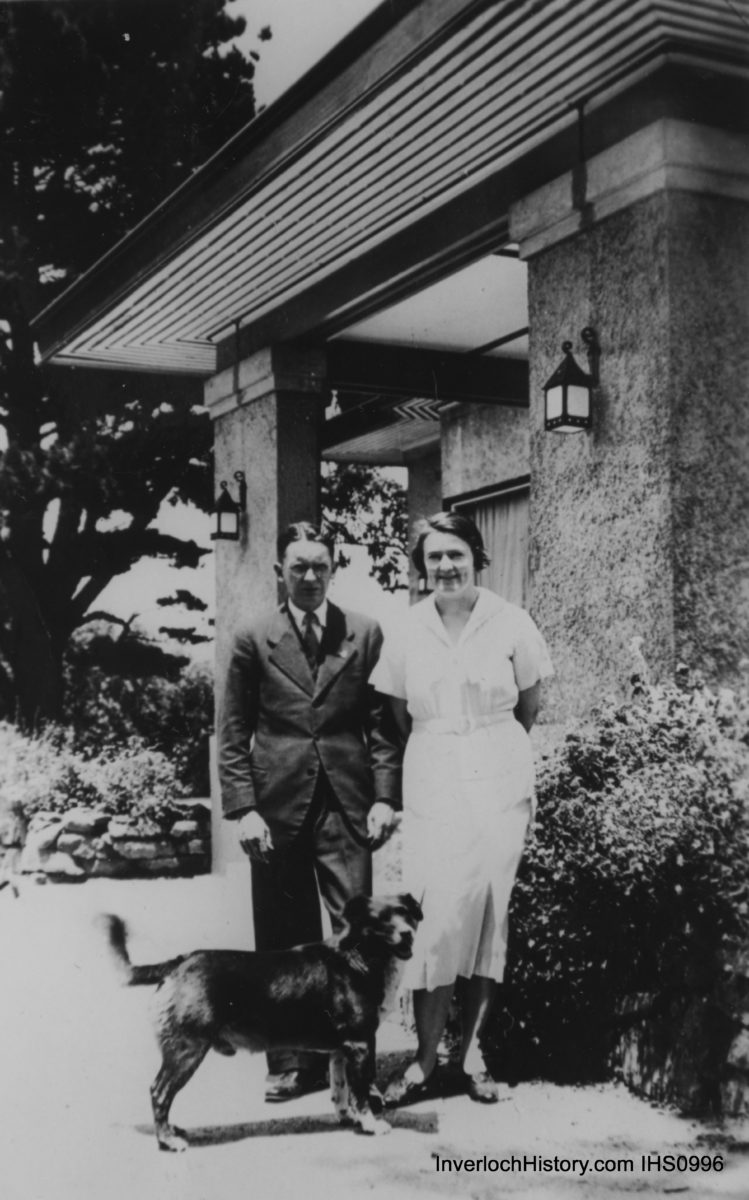
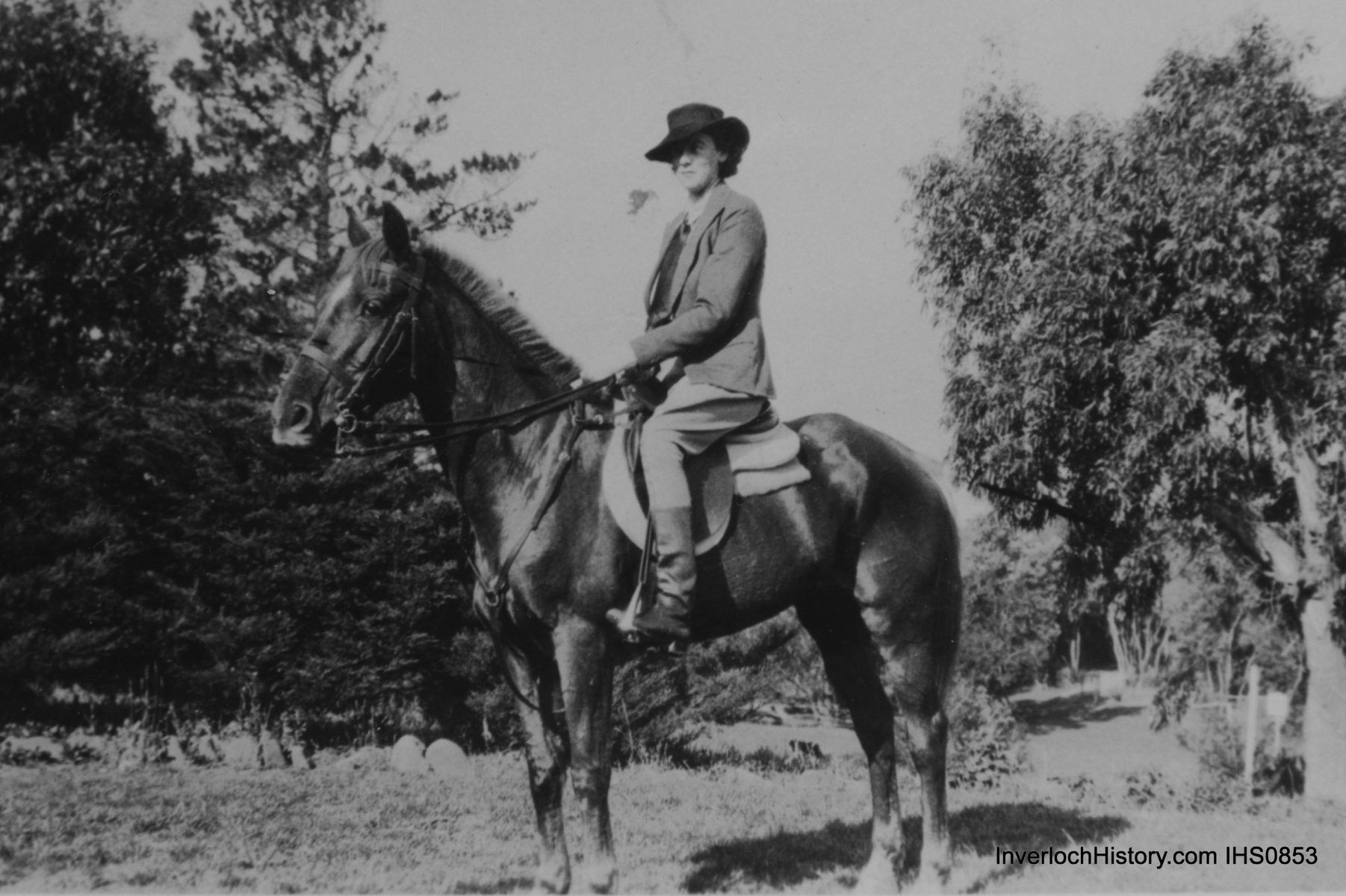
This picture is believed to be of of owner Mrs Grace Wyeth, dressed in her complete riding outfit.
